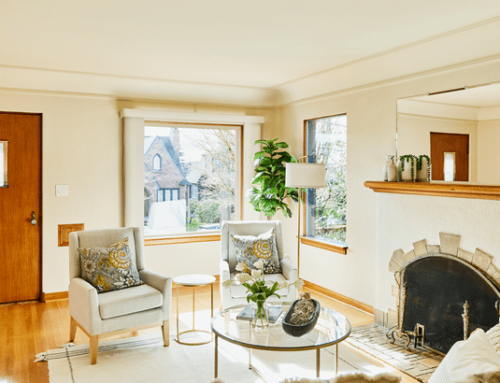It’s no surprise that owning a home is a significant investment, so proper maintenance is crucial to ensure it keeps you happy and sheltered. But with the bustle of our daily lives, it’s easy to underestimate the costs associated with maintaining a home. That’s why we’ve put together this guide to help you plan for future expenses and avoid unexpected surprises. With some careful planning and budgeting, you can feel confident in your ability to handle any upkeep and make your home comfortably yours. Ready to get started? Let’s jump in!
Why Set Money Aside?
First and foremost, why should we even set aside money for home upkeep? Unlike renting, as a homeowner, you are responsible for all maintenance and repairs. That means when something breaks or needs attention in your home, the cost falls on you. And these costs can add up quickly! Not to mention that neglecting necessary upkeep can lead to even more significant (and costly) issues. By planning ahead and setting aside money specifically for home upkeep, you can avoid financial stress and ensure your home remains in good condition.
Understanding Your Home’s Needs
Before you start budgeting, it’s essential to understand your home’s specific upkeep needs. Every house is different and will require various maintenance and repairs at different times. If you’re a new homeowner, this may take some time to figure out. But an excellent place to start is by creating a list of all the areas in your home that may need attention, such as the roof, plumbing, or appliances.
Your home’s needs may also vary based on its location and climate. If you live in a colder area, you may need to budget for snow removal or winterizing your pipes. On the other hand, living in a warmer climate may mean more frequent air conditioner maintenance or hurricane preparation costs. Be sure to consider these factors when creating your home upkeep plan.
Budgeting
Now that you have a better understanding of what your home may need in terms of upkeep let’s talk about budgeting for these expenses. The first step is to estimate how much you’ll need for routine maintenance and unexpected repairs. A good rule of thumb is to set aside 1% of your home’s value each year for upkeep costs. For example, if your home is worth $300,000, aim to save $3,000 per year or $250 per month.
Some home upkeep tasks can be quite costly, such as replacing a roof or HVAC system. In these cases, it may be helpful to set aside a larger portion of your budget each month to save for these significant expenses over time. Consider researching the average costs for these types of repairs in your area to get a better idea of how much you may need to save.
Creating an Upkeep Savings Plan
Once you have an idea of the amount needed, it’s time to create a savings plan that works for you. Some homeowners choose to set up an emergency fund specifically for home repairs, while others prefer to incorporate these costs into their general budgeting and saving practices. Whichever method you choose, make sure to stick to it consistently. It’s also a good idea to review your plan regularly and adjust as needed if your home’s upkeep needs change.
Additional Tips for Saving
Aside from setting aside money for home upkeep, there are other ways you can save on these expenses:
Regularly Maintain Your Home
By keeping up with routine maintenance tasks like cleaning gutters or changing HVAC filters, you can prevent more significant (and costlier) issues down the road. Plus, regular maintenance will help your home run more efficiently and save you money on utility costs.
Consider DIY Projects
If you’re handy, tackling some upkeep tasks yourself can save you a significant amount of money. Some small DIY projects that homeowners can do themselves include painting walls, replacing light fixtures or hardware, and fixing minor plumbing issues. These tasks may seem intimidating at first, but with the help of online tutorials and basic tools, they can be easily accomplished. Not only will doing these projects yourself save you money on labor costs, but it can also give you a sense of accomplishment and pride in taking care of your home.
Shop Around for Contractors
Don’t be afraid to get quotes from various contractors before committing to one. This can help you find the best deal and potentially save money. Remember to do your research and read reviews before hiring anyone to ensure they are reputable and qualified for the job. You want to
feel confident that the contractor you choose is trustworthy, reliable, and will do quality work, such as someone at A-1 Finchum Heating and Cooling. If something doesn’t feel right about a particular contractor, don’t hesitate to move on and find someone else.
Take Care of Small Repairs Promptly
Ignoring small issues can lead to more significant (and more expensive) problems. When something needs attention, address it as soon as possible. This will not only save you money, but it will also prevent further damage to your home.














